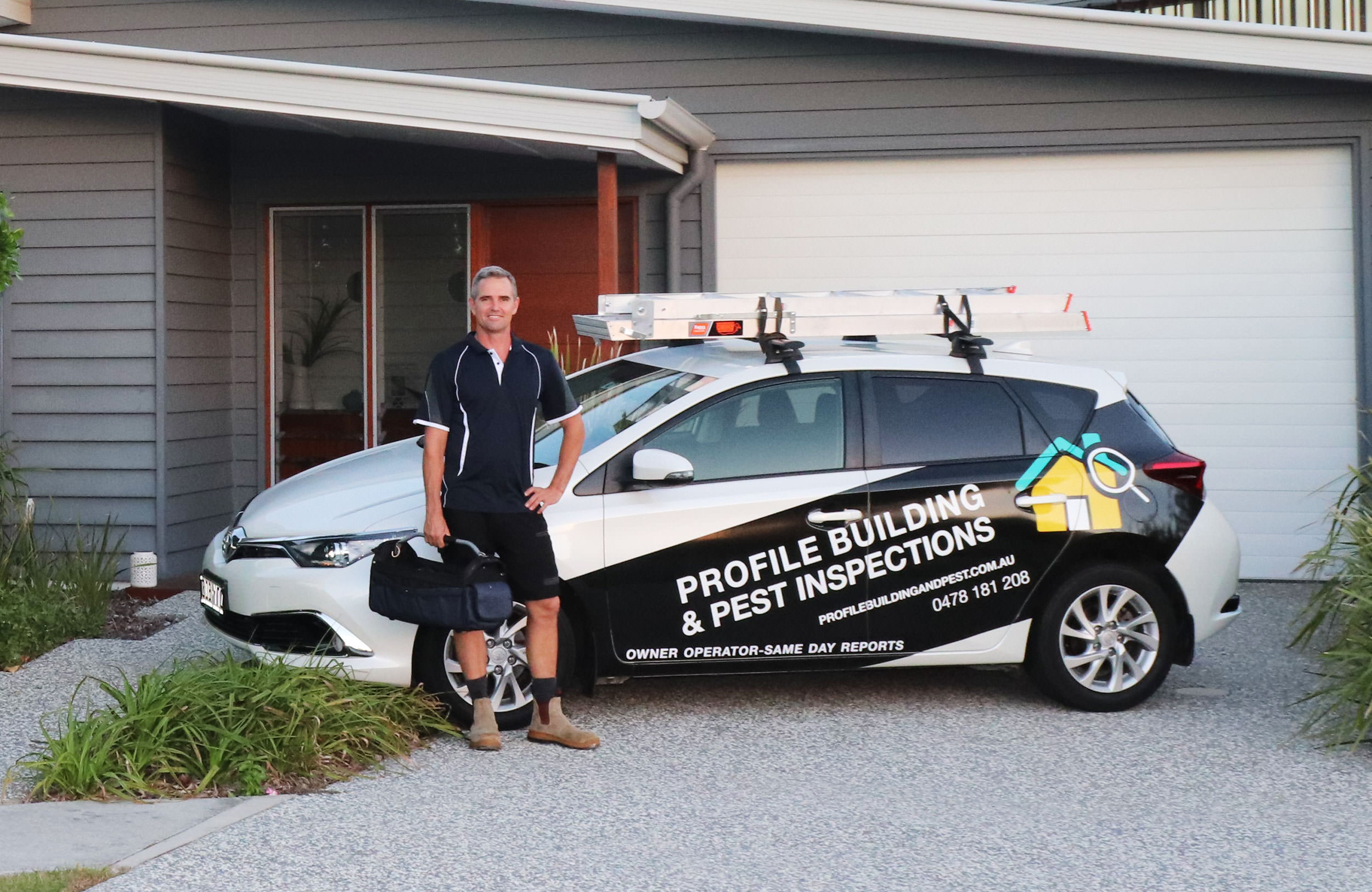Brisbane Building & Pest Inspections
Profile Building & Pest Inspections is owned and operated by Greg Palmer who will be your pre purchase building inspector.
With 27 years residential building experience, over 500 homes constructed and over 2000 Building and Pest Inspections, Greg has the lifetime experience to deliver you the comprehensive report you deserve.
All reports are written in ‘plain’ English with photos provided where practical to clearly identify defects. After the inspection Greg will explain the findings of the inspection and give advice on any repairs required.
If you are unable to attend the inspection, Greg will phone you to chat about his findings, discuss any defects found and give advice on any repairs required.
FULLY ACCREDITED BUILDING INSPECTOR
SAME DAY INSPECTION AND REPORTING
Purchasing a home can be one of the biggest financial commitments that you can make. Relax in the knowledge that an industry expert with 27 years front line building experience will provide you with a detailed easy to read comprehensive inspection report. All building inspections are carried out in accordance with the Australian Standard 4349.1
WHAT WILL THE REPORT COVER?
Site within 30 meters of main dwelling
Interior and exterior of building
Roof surface (height restrictions may apply)
Roof void
Carports, sheds, outbuildings
Sub floor (where accessible)
Driveways, pathways, fencing, retaining walls
Combine your Building Inspection with a Timber Pest Inspection today and save.
All Timber Pest Inspections are carried out in accordance with AS 4349.3. Don’t be another statistic. Ensure your home is inspected for termite damage and or activity today. As a licensed Building and Pest Inspector we have extensive knowledge of construction techniques and can identify areas of high risk.
Inspections are carried out using the latest technological equipment. Advice on any conditions conducive to termite attack and recommendations will be given.
Combine your Timber Pest Inspection with a Building Inspection today and save.
You have just built your dream home. How do you know you are getting the quality you paid for? With 10 years experience as a Building Supervisor handing over 400+ homes, Greg has the eye for detail needed to ensure you receive the quality home you deserve.
Viewing a Defect
Generally, variations in the surface colour, texture and finish of walls, ceilings, floors and roofs, and variations in glass and similar transparent materials are to be viewed where possible from a normal viewing position. A normal viewing position is looking from a distance of 1.5m or greater (600mm for appliances and fixtures and 3m for glass) with the surface or material being illuminated by “non-critical light”. “Noncritical light” means the light that strikes the surface is diffused and is not glancing or parallel to that surface. Slight variations in the colour and finish of materials do not constitute a defect. 1.5 Responsibility to rectify Contractors do not have to rectify damage caused by the owner’s actions or inactions or those of other people engaged by the owner. Contractors will be liable to repair any consequential damage caused by, or as a consequence of carrying out building work on a residential building site or to a residential building on an adjacent site.
Is concrete cracking a defect?
Cracking in concrete is common and is not always attributable to unsatisfactory workmanship. Common causes of cracking include shrinkage stress, stress due to trees, commercial or heavy vehicle traffic, soil movement due to changes in the moisture content due to garden watering or drainage problems. Cracking not attributable to the workmanship of the builder (e.g. trees planted too close to paving, commercial or heavy duty vehicle traffic, excessive garden watering, etc.) is not a defect. Within the first 12 months from completion of the work, cracking or movement in concrete verandahs, garages, carports, paving, patios, driveways etc., where the builder did not make allowances for shrinkage or general movement of the concrete (e.g. isolation joints where required around penetrations such as verandah posts, pipes, expansion joints, control joints and contraction joints), shall be assessed in accordance with Table 2.1 and is defective where the limits in that table are exceeded
Cracking in concrete is common and is not always attributable to unsatisfactory workmanship. Common causes of cracking include shrinkage stress, stress due to trees, commercial or heavy vehicle traffic, soil movement due to changes in the moisture content due to garden watering or drainage problems. Cracking not attributable to the workmanship of the builder (e.g. trees planted too close to paving, commercial or heavy duty vehicle traffic, excessive garden watering, etc.) is not a defect. Within the first 12 months from completion of the work, cracking or movement in concrete verandahs, garages, carports, paving, patios, driveways etc., where the builder did not make allowances for shrinkage or general movement of the concrete (e.g. isolation joints where required around penetrations such as verandah posts, pipes, expansion joints, control joints and contraction joints), shall be assessed in accordance with Table 2.1 and is defective where the limits in that table are exceeded








